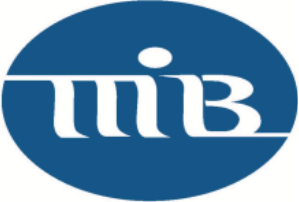TILA.
Q: We have a loan that had the right to rescind. The borrower signed the rescission notice that he wished to confirm the loan. However, the co-borrower said they both wanted to cancel the loan. We have a copy of the borrower’s signature wishing to confirm the loan but no copies with signatures that they both wanted to cancel the loan. Is this an issue? Would it matter if the confirmation was signed after the cancellation?
A: First, the “confirmation” signature is not required or even acknowledged by Regulation Z. (It is a common method lenders use to document that rescission has expired and the customer has not canceled.)
Everything is pretty much driven by timing. The rescission period begins when the last of three things (consummation, provision of the “material disclosures,” and provision of the rescission notices) occurs and ends at midnight of the third business day following that last occurrence. (Usually, all three happen simultaneously, at a loan closing, but they can occur at different times in some situations.)
Then, there is the issue of how a consumer may exercise their right to rescind. That also is time-sensitive. Their notice must be in writing and be postmarked or delivered (if other than by mail) to the lender by the midnight deadline. So, there could be a valid, effective notice of cancellation that the lender does not receive until after the midnight deadline because of mail handling/delivery time.
And, yes, one consumer may cancel a transaction even if another (or others) does not wish to do so. This part is not swayed by majority rule. It is a way to allow each consumer involved to protect their home.
Lastly, the timing of confirmation does not overrule a valid cancellation. If the cancellation/rescission is timely (by the midnight deadline), a confirmation has no effect – it does not cancel out the loan cancellation.
BSA.
Q: We are extending a loan in which the borrowers are natural persons (they sign the note and application), but the mortgage is in the name of their business (which is holding title to the property). It seems that no beneficial ownership form is required, correct?
A: You are correct since the legal entity is not the “customer” opening this account/loan.
Flood Insurance.
Q: We have a current loan in process in which the borrower is contesting the flood determination on his property. The situation is a bit unusual because the house itself is not located in the flood area, but other structures on the property are. The flood determination shows the house just out of the flood zone. We are leaning on the side of caution. If we are going to make the loan, flood insurance is required. Is there an exception that we might be missing?
A: The lender has the responsibility to make a flood hazard determination (using a third party that guarantees its results works fine) and is permitted to be “cautious.” From your description, it sounds like the outbuildings are clearly in Zone A, so flood insurance is not optional for them. The house is barely out of Zone A, so flood insurance coverage is not mandated by law/regulation – but the bank is not prohibited from requiring it in such a case.
For the house, it is up to the lender. For the outbuildings, there is no option (unless you can find some way to exclude them from the security interest; check with the bank’s legal counsel).
Overdraft Privilege.
Q: Do banks need to have an overdraft privilege/service policy vs. having procedures? If so, could you direct me to the regulation or commentary requiring it? I am trying to sort out some details of our overdraft privilege policy and struggle to find much information.
A: Actually, a bank may have both policy and procedure. Policy sets the high-level goals of what the bank wants to achieve (in a case such as this, comply with regulatory requirements, etc.). Procedure sets out what the bank will do to accomplish those goals, with some appropriate level of detail. Policy can be seen as the “what we want to accomplish” and procedure as the “how we will accomplish it.”
Overdraft “privilege” regulatory requirements are found in both Regulation E (for the opt-in requirement before charging fees) and Regulation DD (advertising, etc.). Besides those regulations and their commentaries, you can get information from the banking supervisors’ exam procedures, particularly (for this subject) the Electronic Fund Transfer Act section and the Truth in Savings section.
Having an appropriate (for your bank) level of policy and procedure helps ensure that staff is aware of what is expected of them, how they should accomplish what is expected, as well as helping ensure consistent treatment of and service to bank customers. You end up with happy staff because they know what is expected of them and how to accomplish it, and satisfied customers because they receive a superior level of consistent service.
BSA.
Q: I have a Suspicious Activity Report to give to our Board, and I wondered how much I should disclose or need to disclose to them? Also, should the actual SAR filing be included in the board package?
A: There is nothing in the BSA rules that spells out what must be communicated to the board, just that the board must be notified of a SAR filing. Of course, if a board member is the subject of the SAR, the fact that one was filed about them must not be communicated to that person (as with any other subject of a SAR).
We see variety in how SAR filings are reported to the board (or applicable board committee). A standard method of reporting seems to be to report that a SAR was filed about a person(s) structuring or regarding elder financial abuse or some other general description. Providing a copy of the actual SAR to board members is not required and is probably not a good idea, given the strict confidentiality requirements surrounding SARs – doing so opens up security issues, etc.
Truth in Lending.
Q: We had a customer who rescinded his mortgage loan. Will the loan now be considered as withdrawn, and no fees can be collected from him?
A: Regarding whether the loan will be considered “withdrawn” (presumably for HMDA reporting purposes) – No. An action code of “withdrawn” requires that the applicant expressly withdraw the application before the lender makes a credit decision. In the case of a rescinded loan, the lender has already approved and closed the loan. The Official Staff Commentary on Regulation C provides that the action taken for such a transaction should be recorded as “approved not accepted.”
Recharging fees – No, no fees may be charged to the customer for a loan they have rescinded. In fact, the lender must refund to the borrower all loan-related fees it has collected (even for third-party charges), as provided in the Official Staff Commentary on Regulation Z.
Remember also, the lender must promptly release its security interest – and it must absorb the costs of both the original filing and the release of that mortgage/deed of trust.
One thing to note: Regulation B requires the lender to provide the borrower with a copy of any appraisal related to a home loan. Regulation B also allows the lender to pass the cost of that appraisal on to the borrower and is silent on the issue of a rescinded loan. However, Regulation Z clearly states that the borrower cannot be required to pay any amount – which appears to override the Regulation B provision. So, be sure the borrower gets their copy of the appraisal (free to them).
RESPA.
Q: If our annual escrow analysis shows a shortage greater than one month’s escrow payment, our notice states, “The shortage will be collected over a period of 12 months. If you prefer, you can pay the shortage before DD/MM/YYYY.” There is also an escrow shortage payment notice attached that the customer can send in with the shortage payment. Would this be a violation of Regulation X?
A: You need to remove the statement advising the borrower that, if they choose, they may pay the entire shortage amount by some set date. The bank may accept such lump-sum payments from borrowers but is prohibited from stating anything to “provide the option” to the borrower; it must be their idea. The latest update of the Escrow Accounts: Deficiencies, Shortages, and Surpluses section of the CFPB’s Mortgage Servicing FAQs includes a question and answer exactly on point with this question.
ECOA.
Q: We have a loan applicant who qualifies for the requested loan but is involved in a romance scheme. They want money for their “fiancée.” Can the bank deny the loan and provide a reason that the bank believes the loan proceeds are being used for a fraudulent romance scheme?
A: There is nothing in consumer regulations that requires lenders to extend just any old credit. If they have reason to believe that there is some fraud involved, they are free to deny the application and may cite the reason as something like “suspect transaction involved” (or words to a similar effect). But the bank will want to be reasonably sure of this conclusion.
Bill Showalter, Senior Consultant, Young & Associates, Inc. Young & Associates provides banks and thrifts with support for their compliance programs, independent reviews, and in-bank training, as well as a full menu of management consulting, loan review, IT consulting, and policy systems.










